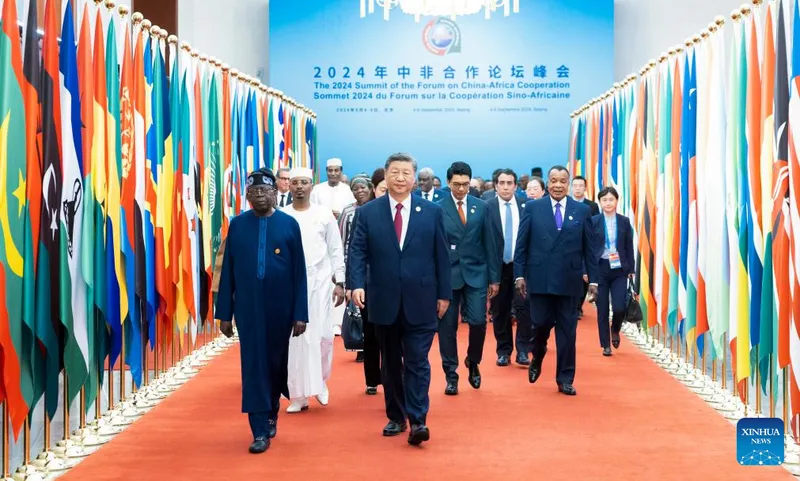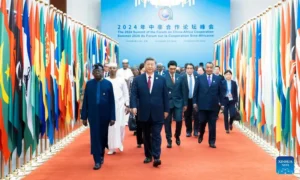In October 2024, Russia extended an invitation to Saudi Crown Prince Mohammed bin Salman to participate in the BRICS meeting in Kazan, marking the first summit since the bloc expanded last year. Six new countries, including Saudi Arabia, were invited to join BRICS (Brazil, Russia, India, China, and South Africa), alongside Argentina, Egypt, Ethiopia, Iran, and the UAE. While countries like Iran quickly confirmed their participation, Saudi Arabia has yet to formally announce its intentions regarding BRICS membership.
This hesitation signals a strategic evaluation by Saudi Arabia’s leadership, weighing the potential advantages and risks associated with joining BRICS. This case study explores Saudi Arabia’s strategic importance to the bloc, its economic interests, and the political implications of such a move.
Economic Drivers for Joining BRICS
Saudi Arabia’s interest in BRICS is driven by several economic factors:
- Access to a Massive Market: BRICS countries represent 45% of the world’s population and 28% of global GDP, making it an attractive bloc for economic partnerships. The growing economic cooperation within BRICS offers opportunities for trade and investment growth for Saudi Arabia.
- Strengthening Trade Relations: Saudi Arabia’s trade with BRICS core countries (Brazil, Russia, India, China, and South Africa) already accounts for 30% of its total imports and exports, and this figure is rising. Notably, Saudi Arabia’s trade volume with BRICS members has surpassed its trade with the U.S., its longstanding ally, indicating a shift toward greater economic diversification.
- Energy Exports: Two of Saudi Arabia’s largest oil buyers, China and India, are part of BRICS. By joining the bloc, Saudi Arabia could secure long-term energy export agreements with these countries, solidifying its role as a key supplier in Asia. Additionally, it could mitigate the risks of competition among hydrocarbon producers in the region by fostering closer ties with its key clients.
Strategic Partnerships with BRICS Members
Beyond economic interests, BRICS offers Saudi Arabia an opportunity to deepen strategic partnerships, especially in the energy sector:
- OPEC+ and Russia: Saudi Arabia already works closely with Russia through OPEC+, coordinating global oil production to stabilise prices. Joining BRICS could further strengthen the Saudi-Russian partnership in energy markets and extend their cooperation beyond oil to other sectors such as defence, infrastructure, and technology.
- China and India: Beyond energy, both China and India are significant economic partners for Saudi Arabia. The Kingdom is a key player in China’s Belt and Road Initiative (BRI), and India’s investments in Saudi infrastructure and technology have been growing. BRICS membership could enhance Saudi Arabia’s role in these initiatives and promote investment flows.
Political and Strategic Risks of BRICS Membership
Despite the economic advantages, there are potential geopolitical risks associated with Saudi Arabia’s membership in BRICS:
- Tensions Between Russia and the West: Aligning with a group that includes Russia could complicate Saudi Arabia’s relationship with Western allies, especially amid ongoing geopolitical tensions between Moscow and the West. This could challenge Saudi Arabia’s ability to balance its traditional alliance with the United States and its growing ties with BRICS members.
- U.S.-China Rivalry: The U.S.-China competition poses another challenge for Saudi Arabia. As a close ally of the U.S., Saudi Arabia could face diplomatic pressures to avoid deeper alignment with a bloc seen as a counterbalance to Western influence. Joining BRICS could raise concerns in Washington, given the Kingdom’s strategic military and security ties with the U.S.
Military and Security Considerations
Saudi Arabia’s defence relationship with the U.S. is another crucial factor in its decision-making process:
- Defense Alliances: The U.S. remains Saudi Arabia’s top defence ally and arms supplier, with 75% of Saudi weapons imports coming from the U.S. between 2019 and 2023. Given the Kingdom’s reliance on Western military support, BRICS membership could be seen as a risky move, potentially jeopardising these vital defence and security ties.
- Balancing Alliances: Saudi Arabia’s security dependence on the U.S. contrasts with BRICS’ more informal and economically focused structure. The Kingdom must weigh the risks of aligning with BRICS, especially considering the bloc’s political differences, such as the rivalry between China and India. This internal discord within BRICS may make it difficult for the group to adopt cohesive stances on key global security issues.
The Case for Selective Participation
Despite the uncertainties, Saudi Arabia has demonstrated a form of selective engagement with BRICS-related events, which reflects a cautious, pragmatic approach:
- De Facto Involvement: By participating in BRICS discussions and collaborating on specific initiatives without formal membership, Saudi Arabia can continue to benefit from economic partnerships with BRICS countries without fully committing to the bloc. This approach allows the Kingdom to avoid the geopolitical entanglements associated with formal membership.
- Minimising Risks: By maintaining a balanced foreign policy, Saudi Arabia can protect its key alliances with the U.S. and the West while gradually deepening its economic ties with BRICS nations. This strategy reduces the risks of being seen as aligning too closely with any single power bloc, particularly in an era of shifting global alliances.
Saudi Arabia’s strategic importance to BRICS lies in its economic clout, energy exports, and potential to foster deeper partnerships with China, India, and Russia. However, the Kingdom’s hesitance to fully join BRICS reflects the delicate geopolitical balancing act it must perform, particularly with its Western allies. For now, selective participation offers Saudi Arabia a middle ground, enabling it to reap the benefits of BRICS cooperation while minimising the political risks of formal membership.
Ultimately, Saudi Arabia’s decision to join or remain on the periphery of BRICS will be shaped by its long-term strategic goals—particularly its efforts to diversify its economy under Vision 2030 and navigate an increasingly multipolar world order.






